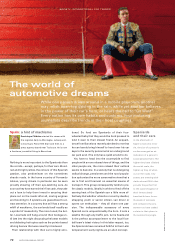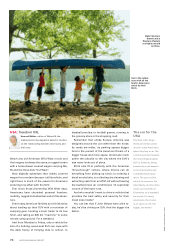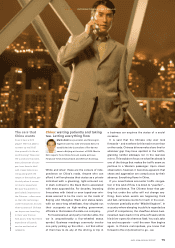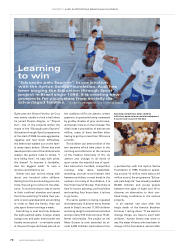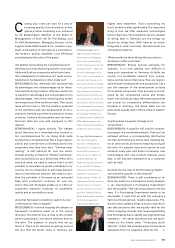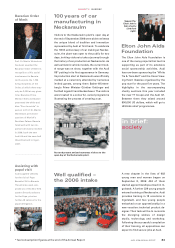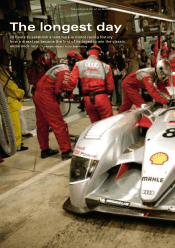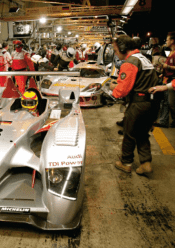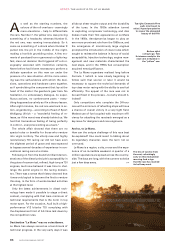Audi 2006 Annual Report Download - page 83
Download and view the complete annual report
Please find page 83 of the 2006 Audi annual report below. You can navigate through the pages in the report by either clicking on the pages listed below, or by using the keyword search tool below to find specific information within the annual report.
Tough negotiations help
to yield good results.
81AUDI 2006 ANNUAL REPORT
And how does a supplier become so “quality-
enabled” that they can leap through that hoop?
BREIDENBACH: By making top quality the core
aspect of their corporate strategy. That’s some-
thing that has to be drummed into the employ-
ees. Missing quality targets has to have the same
consequences as missing financial targets.
BERKENHAGEN: Quality is a “must”, whether at
Audi or at all our partners. You can’t afford to un-
derestimate the importance of parts that are
worth ten cents, compared with parts that cost
100 euros or more. If a basic screw in an assem-
bly costing several thousand euros causes it to
malfunction, the damage can be immense. So
the same quality standards always have to be ap-
plied to all parts. There’s simply no other option.
It looks as if suppliers will be facing some hard
times. Will that result in further consolidation
among automotive suppliers? Will smaller manu-
facturers actually be able to survive?
BREIDENBACH: I wouldn’t exactly say that we
are facing “hard times”. Suppliers have had to
contend with intensive competition for many
years now. That actually introduces a bit of spice
into our lives. I believe that there is ample poten-
tial even for smaller suppliers to survive.
And how can car manufacturers and suppliers
be successful by joining forces?
BREIDENBACH: As well as laying down and ad-
hering to the rules of the game, above all we
should make sure that our expectations tally, for
instance regarding the development of new
technologies. By that I mean that suppliers and
OEMs should draw up a kind of “roadmap” for
future technological developments over a longer
period.
BERKENHAGEN: That brings me back to the
notion of partnership. You can legitimately
compare it to a partnership in private life. Both
partners constantly have to keep working at it.
Specifically in the case of car manufacturers and
suppliers, I like to describe it as a form of con-
structive conflict management. By tackling these
conflicts jointly, you lay the foundations for a
lengthy, trusting, successful partnership.
include superior quality. In this connection, Hella
is pursuing the “2ppm strategy” (two parts per
million). That means that by 2012, we are aiming
for a rate of just two faulty parts per million com-
ponents shipped. We are currently halving our
fault rate every year. And we are finding that the
subsidiaries that are making the biggest
progress in quality are the ones with the best
cost structure.
BERKENHAGEN: It’s really quite straightforward.
The next step that we at Audi expect a supplier to
do is safeguard their acquired quality capability
in the long term. We scrutinise that very closely.
Whenever we nominate a supplier, it is more
than just a unilateral decision by our procure-
ment people; it is also influenced by the Techni-
cal Development, Quality Assurance, Production
and Logistics departments. And we will be set-
ting the standard even higher in future.
The Purchasing Depart-
ment at AUDI AG has a
staff of around 400,
procuring materials for
the entire company,
from pencils to brake
callipers. It uses a pool of
around 4,400 suppliers.
The purchasing volume
in the 2006 financial year
was in the order of EUR
14.6 billion. Of this total,
the procurement of ma-
terials for the construc-
tion of vehicles accounted
for some EUR 12.7 billion.



